By: Dave Davies, Beanstalk Internet Marketing
As we entered 2019 there’s one thing we all wish for … one thing common to all our resolutions … to leave the year better than we entered it.
And speaking of common things, your website is very much like your physical body in this regard: it is very often a series of small things that have the biggest impact rather than major activities. Just like eating well each day and getting a bit of exercise is the key to a healthy life, so too is constant care for your site and SEO.
And so, we have here five SEO resolutions you should be making, five little things that don’t take a lot of time by themselves but will have a noticeable and very positive impact on your rankings and your business. So, let’s dive in …
One – Claim Your Business & Post Regularly
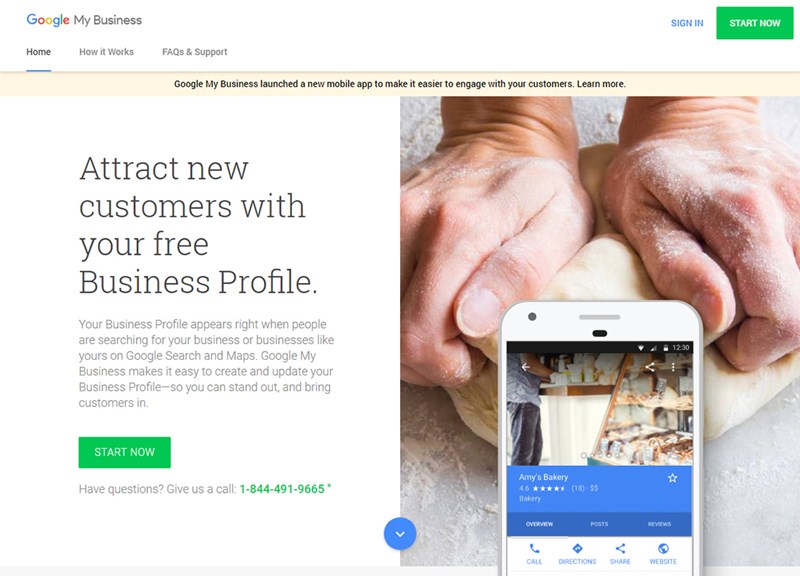
Most of you will have likely heard of and hopefully claimed your business through Google My Business. Many are not aware that Bing also offers this feature to businesses via Bing Places.
Claiming your business location through both services is, without a doubt, the #1 thing you can do in your local SEO efforts. Full stop.
Claiming your listing not only confirms to the engines that you are in fact the business, at that location, with that phone number and for SEO, with that website, offering those services … but it unlocks a ton of other features as well.
Once logged in you can obviously edit your listing quickly including adding photos, descriptions, services, categories and more, but you can add posts. Posts appear in the search results in the knowledge panel. That’s the information that typically appears on the right-hand side of search results for, among other things, business names.
You add a post by selecting it on the right-hand side of Google My Business. You can post about pretty much anything, but they offer specific templates for news, events, offers and products.
You can also add a link. The ‘call-to-action’ of the link can be to book, order online, buy, learn more, sign up or call now.
You can link to other sites if you feel so inclined. I often do when I’m published elsewhere. Having been included in a piece on local SEO by Advice Local, I can add it to my posts as:
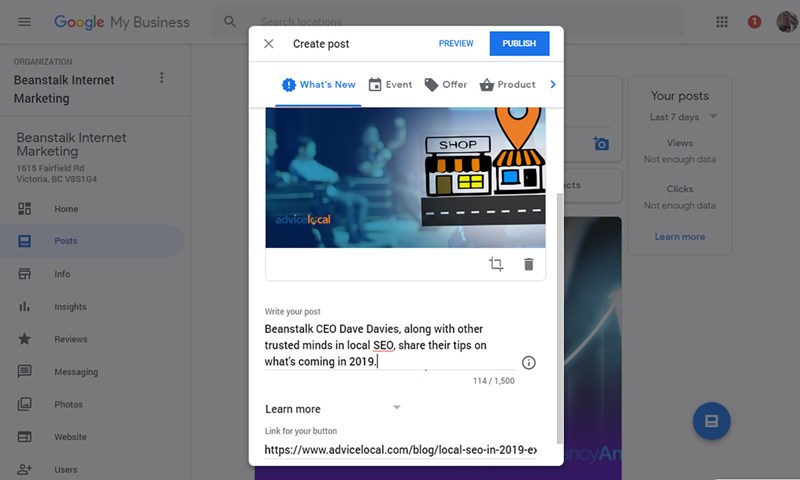
Tip: the image should be sized to 720px wide by 540px high to appear properly. Interestingly that doesn’t come across in the interface but …
After clicking publish it appear on Google as:
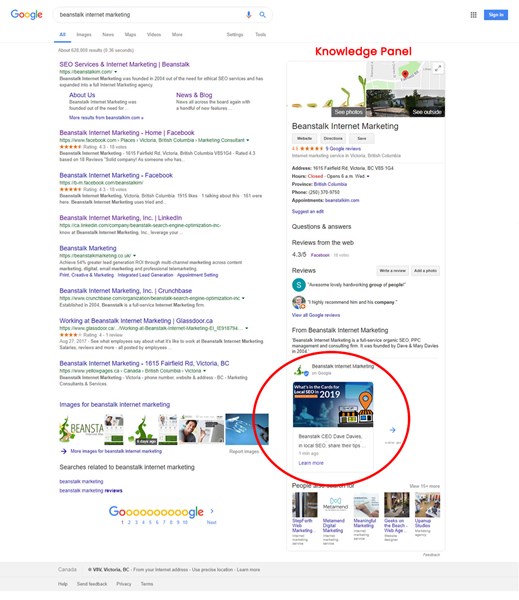
Presently posts are appearing fairly far down the right-hand side and were recently moved from closer to the top.
There was a drop in clickthroughs when this happened however we’re still finding some good engagement and ROI for sales and specialized tours/trips.
Additionally, Google is putting a lot of emphasis on reminding us all to post so there’s a good chance their impact will be heightened in 2019. But even if not, it’s worth taking the few seconds to do when you publish a post or are noted on the web.
Two – Organizational Schema
Alright, we’re about to get a bit technical but it’s not too bad and most of it you can do with a Wordpress plugin or copy and paste.
Organizational schema is basically some code you place on your site. It is not visible to humans if you use the recommended version and passes along to the engines all the key facts about your site.
If your site is built in Wordpress you can get this step completed with a variety of plugins. When I’m not doing them manually I tend to use Yoast’s Local SEO module but it’s $69/yr if you’re buying just a single license and don’t wait for a sale (which I recommend). It comes with some other handy features I use but if you just want schema and you’re built in Wordpress there are some plugins listed in this article that look pretty good.
For those of you not in Wordpress or who prefer more control than a plugin can provide, you can generate the Schema yourself and place it within the code of your site. Where you place it isn’t particularly important as it’s not visible on the page. I tend to place it within the heading, above the </head> tag which will make sense to you if this is a route you should consider.
The code will look something like:
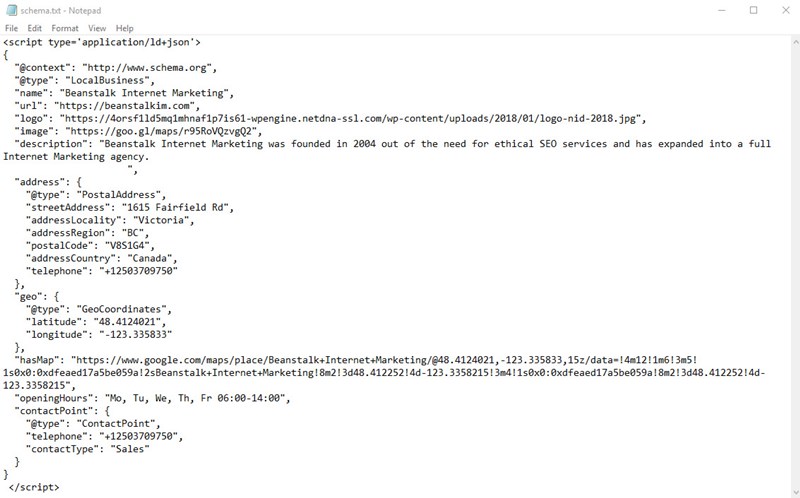
I tend to start with a generation tool like the one over at Hall Analysis which is excellent. Once you’ve got that started and if you feel comfortable you can add elements from Schema itself to provide additional information. This truly is a case of more being better.
I highly recommend checking your Schema with Google’s Structured Data Testing Tool prior to deployment on your site or immediately after publishing it.
Three – Embed Your Google Map
You probably want to allow visitors to easily find you so why not use your Google map location to assist them?
To embed a map simply find your listing on Google Maps (this is usually appear when you search your company name in to the top of the knowledge panel you should see a map though if not you can search directly on Google Maps).
From there simply click the ‘Share’ icon and copy the embed code. You will then place it within the code of your site.
If you are using Wordpress or another CMS you will need to remember to switch to Text or Code View instead of visual.
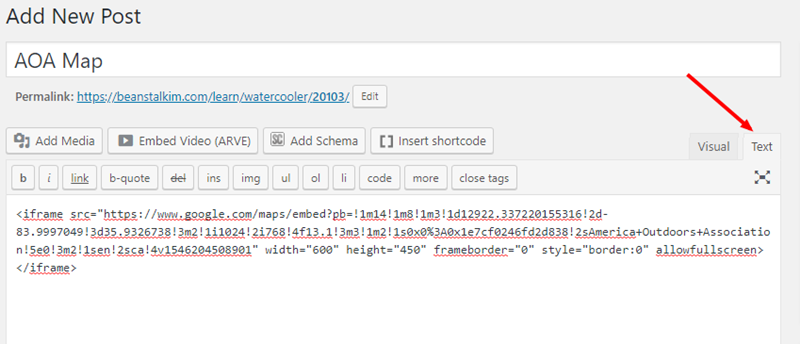
If you leave it in visual, all you’ll get is your embed code appearing on your page.
The process looks like:
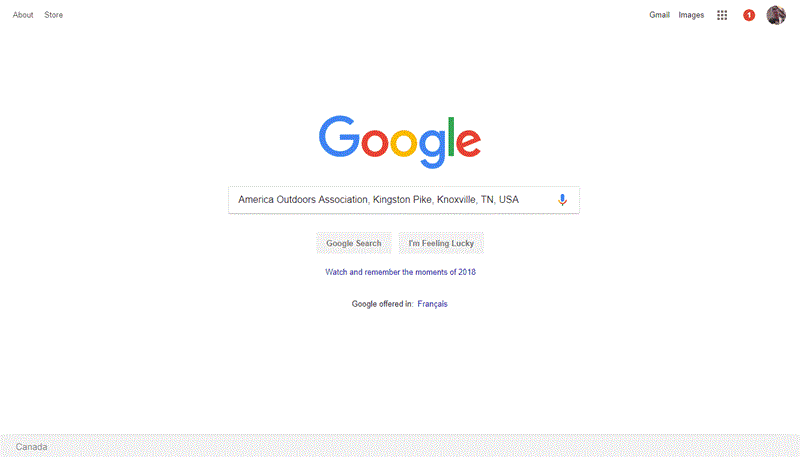
Not only will this reinforce your location to Google on your site but also provide an easy way for your visitors to get directions from wherever they are.
And while you’re at it, make sure your address appears on the target page of your business listings as a further reinforcement that you are indeed located where they think you are.
Four – Take A NAP
In local SEO NAP stands for Name, Address, Phone number and it’s incredibly important.
Your business listing likely appears in many locations. Google, Bing, Yelp, FourSquare and a myriad of other sites, many of which are considered citation sources. That is, they serve to cite who you are and where you’re located and once again reinforce that you are at the location they believe, doing the things they think you do, under the name they think you’re called.
And many of them count as links as well.
There are literally thousands of citation sites and I ignore most of them but there are good number of them that apply to each niche and provide value.
The best list I’ve stumbled upon can be found here and contains the top 50 citation sites for the US, Canada, UK and Australia.
There are also services such as Bright Local, Advice Local and Moz Local that can do it for you for a fee which may be a better use of your time.
Five – Write Content About Your Niche AND Your Area
Google doesn’t know if you’re the best rafting company, they don’t know if the food you serve tastes better than others and they don’t know if your more conveniently located (OK – on that last one they actually do) but what they do know is whether a user’s intent is going to be better served on your site or another. They’re getting better at this every day thanks to machine learning and one of the best ways to maximize the odds of the engines knowing you’re more likely than your competitor to meet a user’s intent is to actually do that.
If I look for:
“whitewater rafting texas”
I may be looking to book a trip. I might also be wondering what the rivers are for a future trip. Perhaps I’m simply a high school student tasked with writing a piece on a sport in my area who has an affinity for whitewater rafting.
I may not know specifically what their intent is and neither does Google in many cases but what they do know (and so does Bing) are the various intents they’ve seen before, what content met it and whether you have that.
Certainly, providing tours is the most likely intent to be met but you and all your competitors do that. You need to answer the other intents. You’ll also be well-served to think about what the searcher might be looking for after this intent is met. What would the next logical and related task be? It may be looking for accommodations, it may be looking up other things to do in the area, etc. Meet these additional implicit intents as well if you can and you will be rewarded.
This doesn’t have to mean offering every service, simply provide information on them though I would never recommend referencing direct competitors of course.
And Then?
There is no end to the task list. There is always something you can do but these are the areas I see too often ignored and generally easily remedied with great impact.
This should not be taken as an exclusive list. That is to say, these five things will have a solid impact on your rankings, but they are not the only areas of SEO to be aware of, they are simply five things that you can do that will move the needle and apply almost universally.
If you’ve completed these and you’re ready to dive into the next stages I highly recommend regularly visiting sites like Search Engine Journal and Search Engine Land and of course, attending the America Outdoors Conference where you get access to some amazing marketing experts like Lisa Buyer, Julie Thorner, Keith Burtis and many more.
While reading is excellent and helps you keep up with what’s going on, nothing beats having access to digital marketing experts directly to help answer your specific questions and as someone who regularly attends conferences as both a speaker and attendee, I can’t stress how valuable this direct interaction can be.
About Beanstalk Internet Marketing
Email: dave@beanstalkim.com
Phone: 877-370-9750
Website: https://beanstalkim.com/
Note from the author: Dave Davies and Beanstalk have worked extensively in the travel and tourism space for over 15 years. Feel free to contact him if you have any questions.